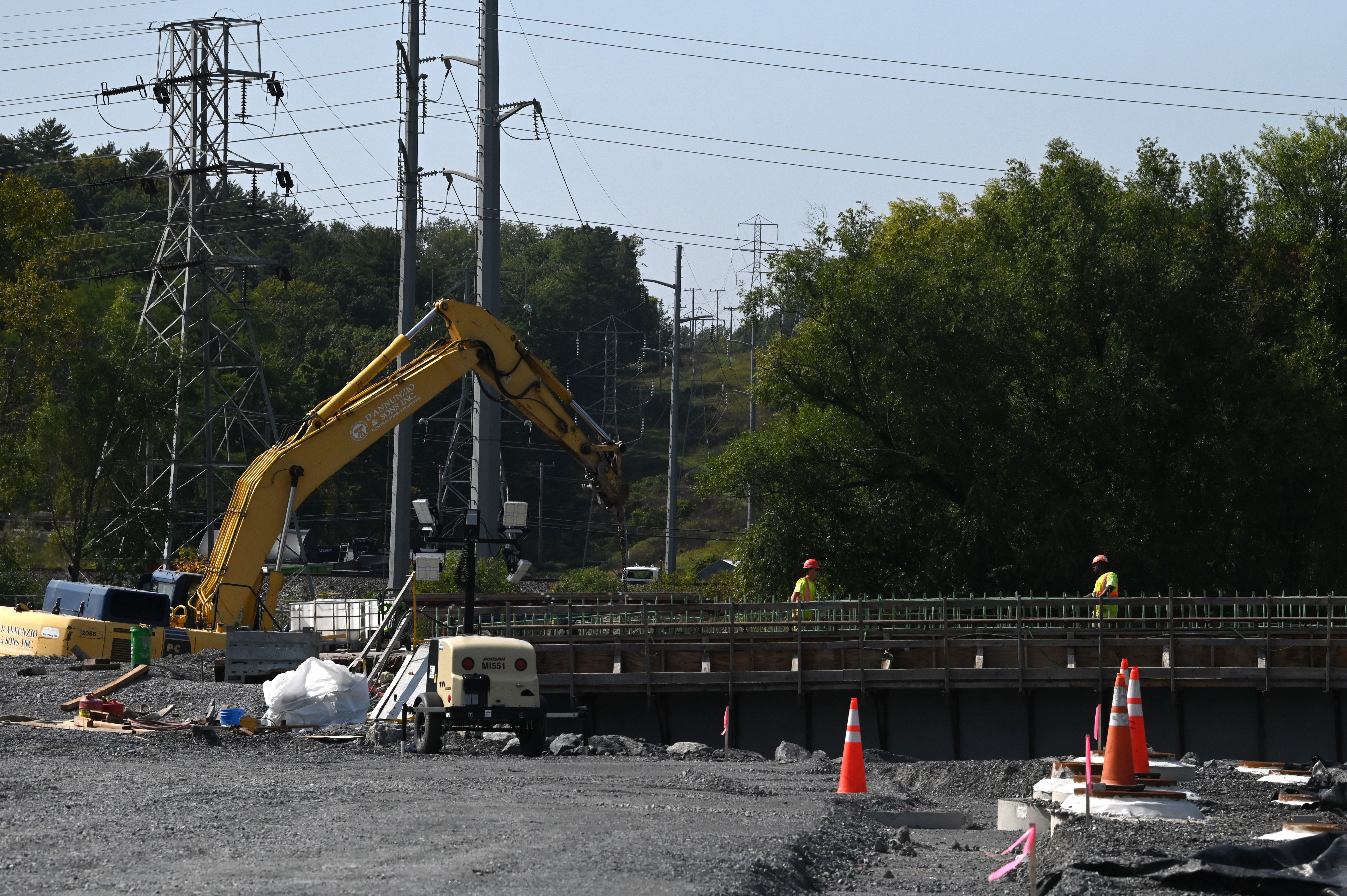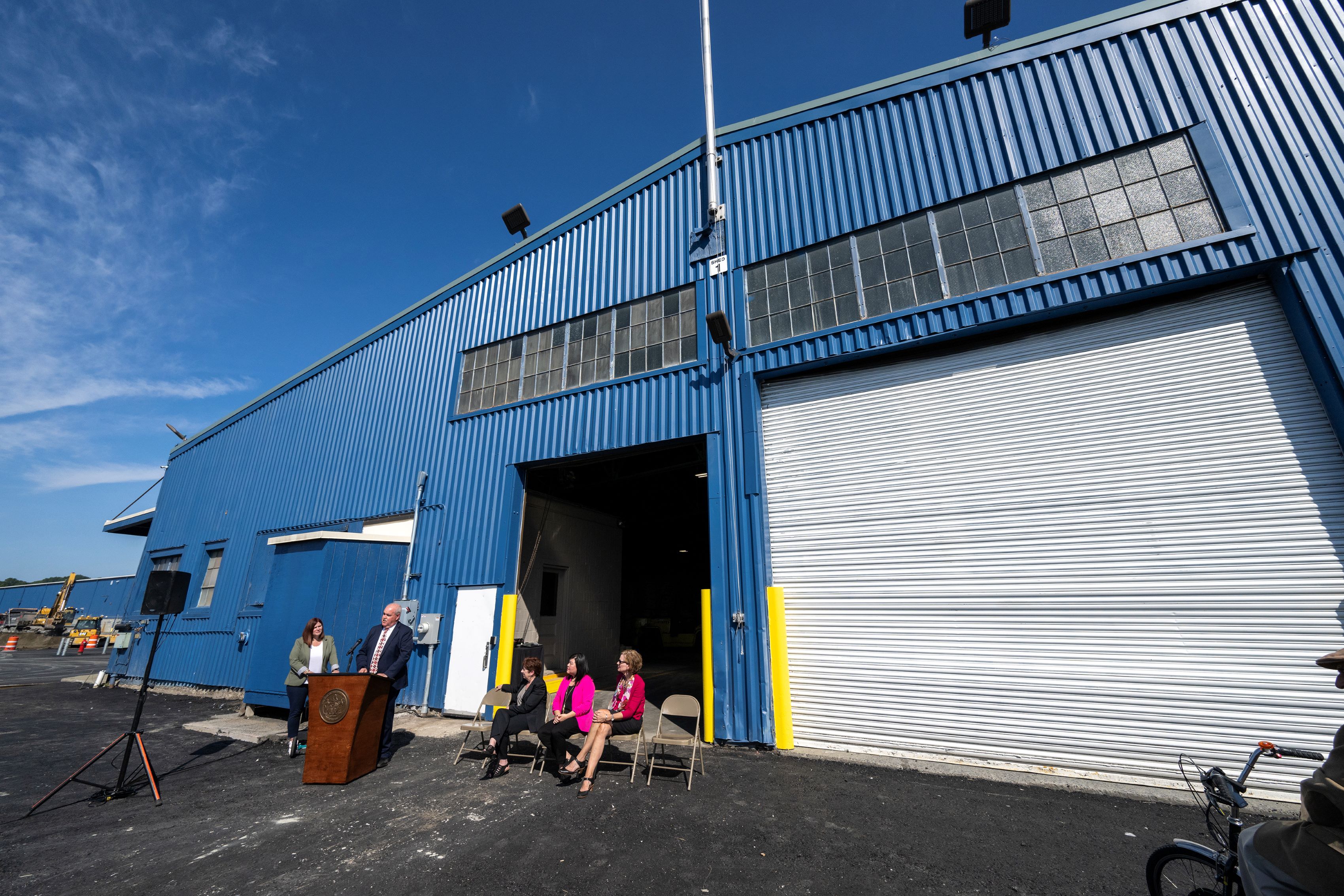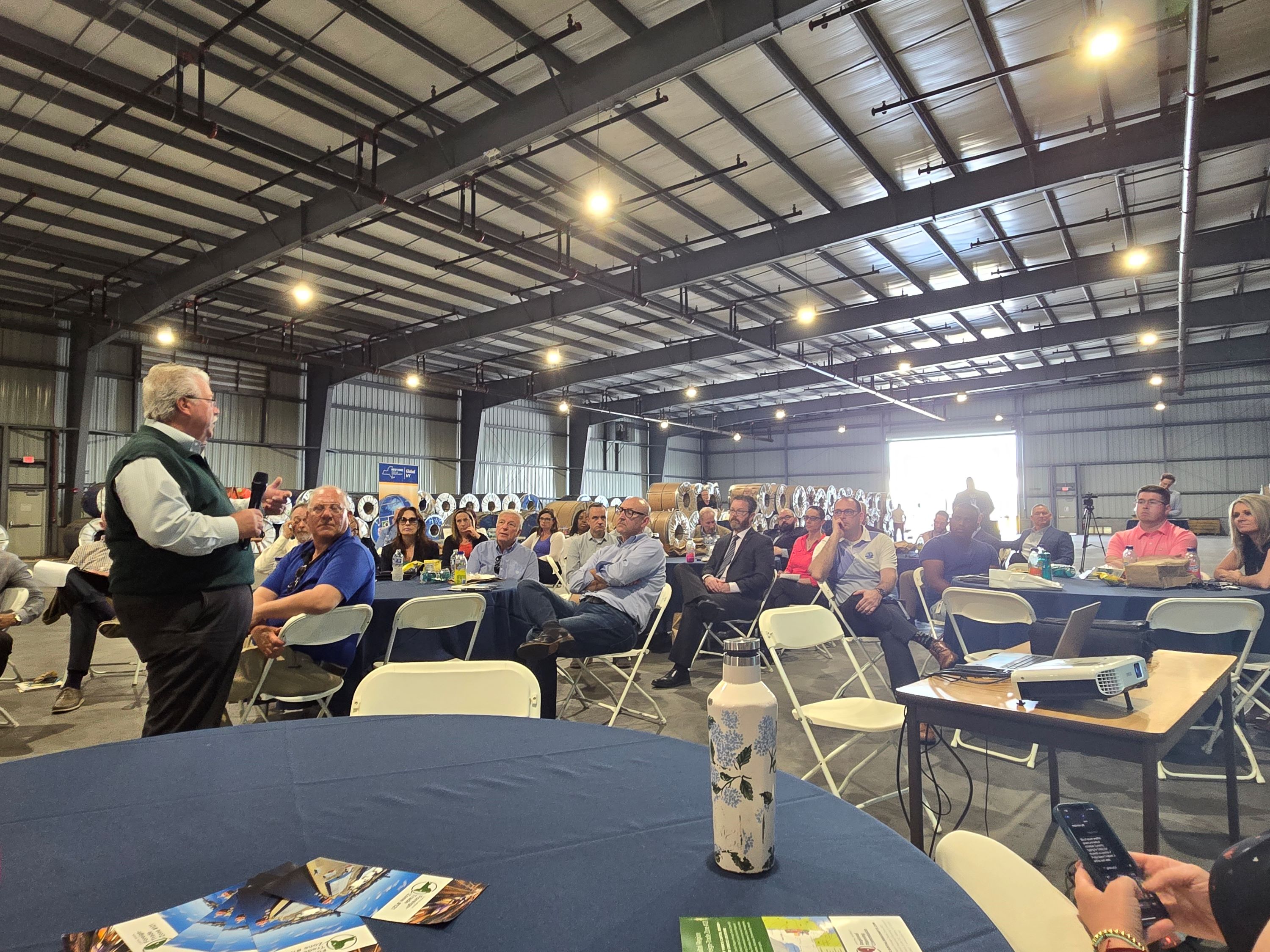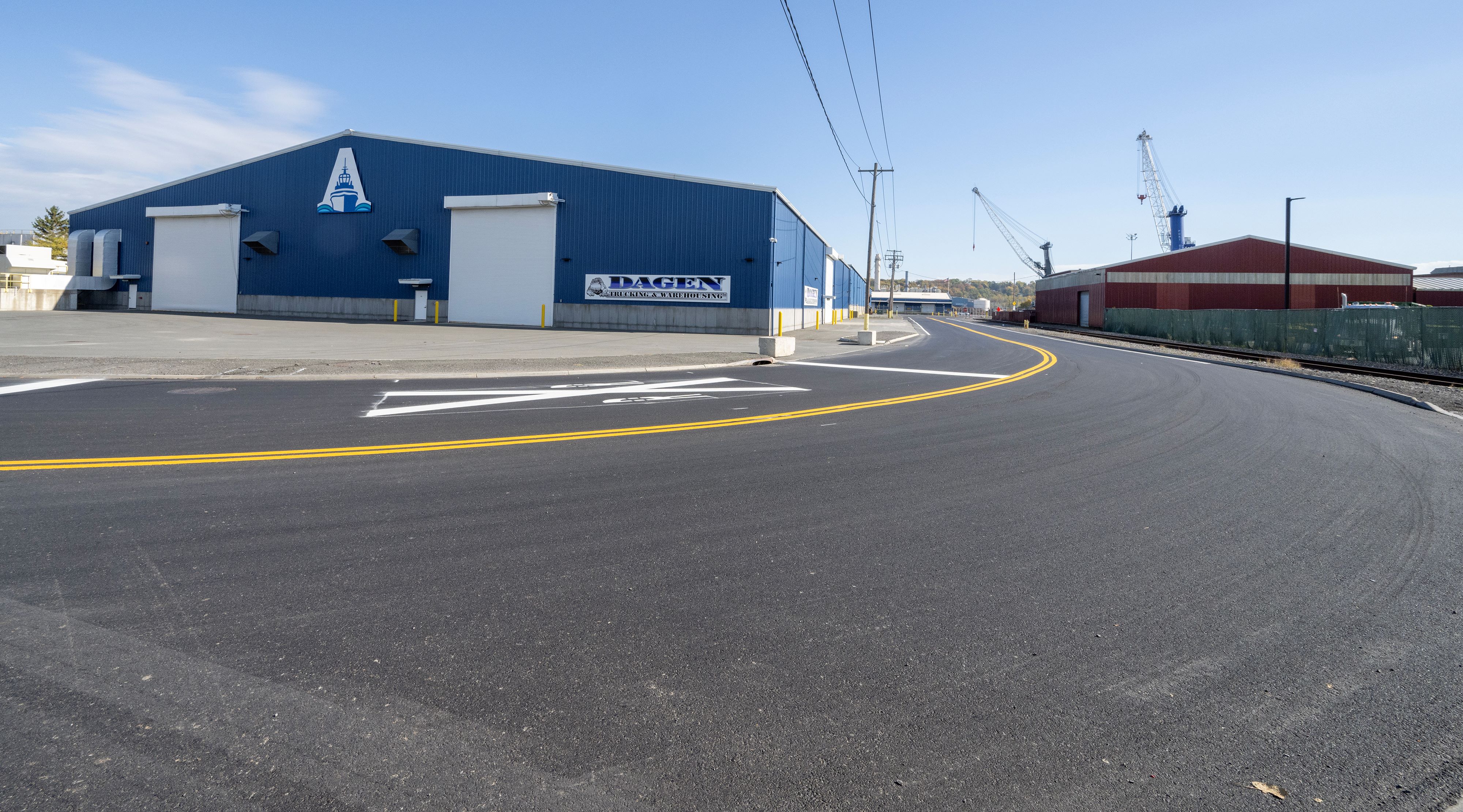Infrastructure & Investment
Through competitive grant processes, the Port of Albany has received millions in funding from U.S. Department of Transportation, NYS Department of Transportation, Empire State Development, and private investors to support strategic maritime terminal improvements and expansion.

Photo Credit: Albany Times Union
Pending Projects
Upcoming Heavy Rail and On-Dock Terminal Improvements
In 2023, the Port was awarded a $9.9 million grant from NYS Department of Transportation Passenger and Freight Rail Assistance Program (PFRAP) for upgrades to heavy rail and on-dock wharf system (the concrete support) at the Port’s existing maritime terminal. The funding will help modernize key freight lines and port facilities, enhance the safety and resiliency of vital freight corridors, and support New York’s nation-leading agenda to combat climate change by facilitating greater use of zero-emission equipment and reducing truck traffic and congestion.
Rensselaer Development-Ready Opportunity
In 2022, the Port acquired the lease of 35 Riverside Ave, a 42.5-acre lot with connection to the existing Port of Rensselaer wharf on the east side of the Hudson River. The site has rail availability and connection with power capacity. Prior industrial use will allow for streamlined permitting due to extensive due diligence already completed on site.
Beacon Island Commercial and Manufacturing Opportunity
In 2018, the Port acquired more than 80-acres adjacent to the Port’s southwestern border in the town of Bethlehem, NY for expansion opportunities, adding 25% to the land area of the Port District. In 2021, the Port was selected through NYSERDA’s competitive Round 2 Solicitation to develop the nation’s first offshore wind tower manufacturing supply chain facility. The site was developed to support this proposed project with more than $170 million of funding as part of an innovative public-private partnership. However, due to changed economic and supply chain conditions, considerations are being made toward alternative projects. Today, the fully permitted (i.e., local, state, and federal permits in-hand) project, stands as a key opportunity to advance state and federal business investment, domestic manufacturing, and new and additional maritime commerce.
Project Highlights:
- Environmental improvement
$2.8 million invested including wetland credits and subaquatic vegetation and sturgeon mitigation - A betterment of the site
30,000+ tons of contaminated and unsuitable soil removed/disposed - Landfill reclamation
More than 1,000,000 tons of stone from local quarries used to create environmental cap - NEW bridge
420 feet of heaviest-capacity bridge across Normanskill Creek with piers located out of the water - Installed utilities
Including buried electrical duct bank, fire protection mainline, storm water management system, and domestic water line. Dedicated site power sub-station planned in 2025. - Heavy capacity wharf
NEW 500 feet, 6,000-PSF wharf (5-10X stronger than traditional wharf construction) in planning.
Completed Projects
Port of Albany Maritime Infrastructure Investment Project
In 2024, the Port of Albany Maritime Infrastructure Investment Project completed reconstruction of the Port’s 30-acre maritime terminal and adjacent roadways, including Smith Blvd, Raft St, Boat St, Normanskill St, and S. Port Rd. This is the first time in the Port’s history that the entire maritime terminal was entirely reconstructed since 1932.
Maritime Infrastructure Investment Project Highlights:




